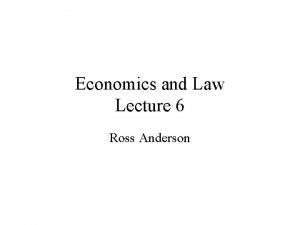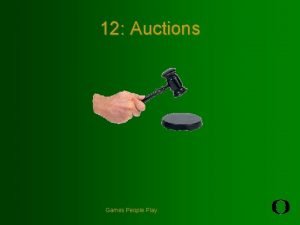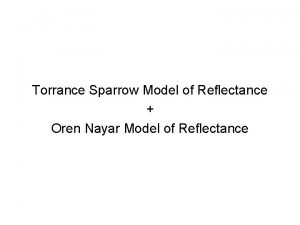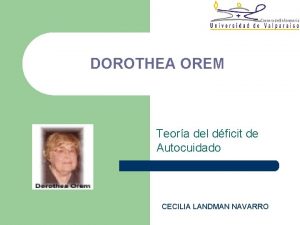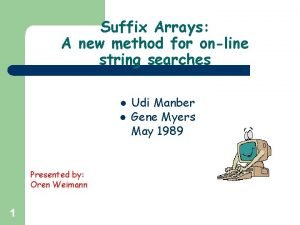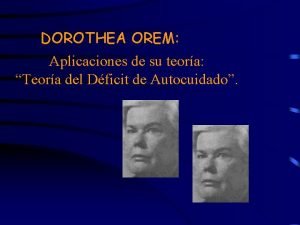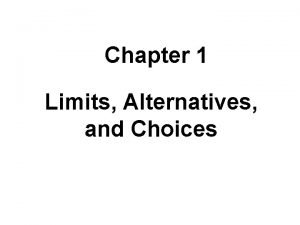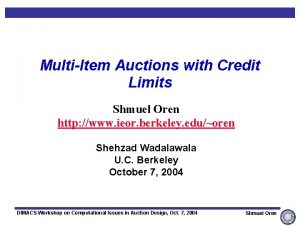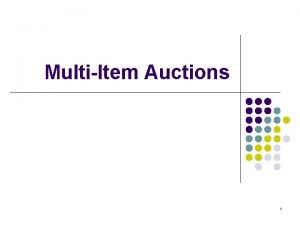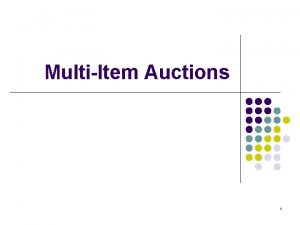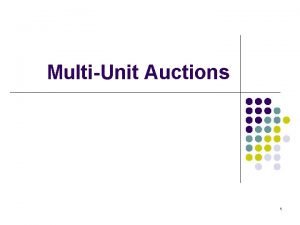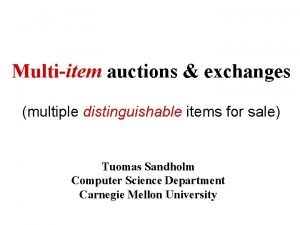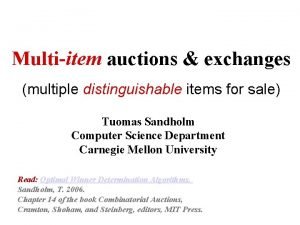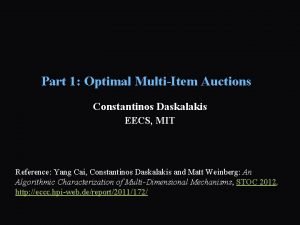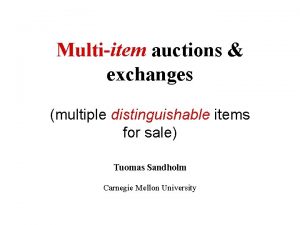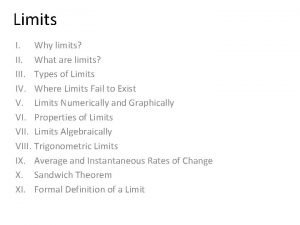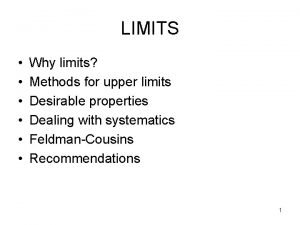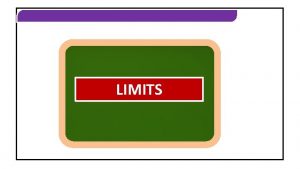MultiItem Auctions with Credit Limits Shmuel Oren http






























- Slides: 30

Multi-Item Auctions with Credit Limits Shmuel Oren http: //www. ieor. berkeley. edu/~oren Shehzad Wadalawala U. C. Berkeley October 7, 2004 DIMACS Workshop on Computational Issues in Auction Design, Oct. 7, 2004 Shmuel Oren

SIGNIFICANT CONSTRAINTS IN ERCOT SUMMER 2001 Multi-Item Auctions with Credit Limits 2 Shmuel Oren

Trading Pattern in ERCOT Summer 2001 1200 MW 58 0 3750 MW 720 MW 2200 MW WEST 2001 LOAD 3, 700 MW GEN 5, 300 MW NORTH 2001 LOAD 20, 700 MW GEN 22, 000 MW W M 31 0 W M SOUTH 2001 LOAD 33, 000 MW GEN 45, 200 MW Multi-Item Auctions with Credit Limits 3 Shmuel Oren

The ERCOT Zonal Congestion Management Model • Three zones and four “Commercially Significant Constraints (CSC)” • Zonal spot prices and shadow prices on CSCs determined by a zonal economic dispatch algorithm (Min generation cost s. t CSCs) • Bilateral transactions between zones charged zonal price differences for congestion • Congestion charges can be hedged by buying Transmission Congestion Rights (TCRs) that constitute financial entitlements to the real time shadow prices on CSCs Multi-Item Auctions with Credit Limits 4 Shmuel Oren

Hedging Congestion Charges with TCRs • Full hedging of the congestion charge for 1 MW sent from A to B requires a portfolio of TCRs in proportion to the Power Transfer Distribution Factors (PTDF) 1 MW A 2/3 B 1 MW 1/3 C Multi-Item Auctions with Credit Limits 5 Shmuel Oren

Bid Format in the TCR Auction • Bidders submit price and quantity pairs for vectors of flow distribution Portfolio Bids on CSCs Bid (per. MW) Quantity (MW) Bid S-T G-P STP-Dow A 1 0. 2 0. 3 0. 5 $10. 00 300 A 2 1. 0 0. 0 $5. 00 185 B 0. 2 0. 5 0. 3 $11. 25 250 C 1 0. 6 0. 3 0. 1 $7. 50 240 C 2 1. 0 0. 0 $1. 00 100 D 1 0. 2 0. 4 $9. 50 320 D 2 0. 0 1. 0 0. 0 $3. 00 140 D 3 0. 0 1. 0 $2. 50 170 The letter identifies the bidder while the number identifies bid Multi-Item Auctions with Credit Limits 6 Shmuel Oren

Resource Constraints Available TCRs TCR Limit S-T 447 S-T 186 G-P 339 G-P 141 STPDow 419 STP 174 Dow Multi-Item Auctions with Credit Limits 7 Shmuel Oren

LP Formulation of Clearing Algorithm Multi-Item Auctions with Credit Limits 8 Shmuel Oren

LP Solution Total TCRs Awarded (rounded down) Bid Award S-T G-P STP-Dow Paid total A 1 300 60 90 150 $2, 265. 00 $7. 55 $10. 00 A 2 126 0 0 $126. 00 $1. 00 $5. 00 B 236. 7 47 118 71 $2, 655. 25 $11. 22 $11. 25 C 1 240 144 72 24 $1, 692. 00 $7. 05 $7. 50 C 2 40. 3 40 0 0 $40. 00 $0. 99 $1. 00 D 1 146. 7 29 58 58 $1, 363. 00 $9. 29 $9. 50 D 2 0 0 $0. 00 D 3 115. 3 0 0 115 $258. 75 Total Awarded 446 338 418 $8, 400. 00 Clearing Price $1. 00 $20. 75 $2. 25 Multi-Item Auctions with Credit Limits 9 Paid per MW Bid $3. 00 $2. 24 $2. 50 Shmuel Oren

Credit Limits • Awards to any bidder may be constrained by credit limits on total cost of awards • Bidders may want to self-impose limits on spending in the auction • Self-imposed credit limits often serve as a proxi for contingent constraints • EXAMPLE XOR constraints that would require an MIP clearing engine Multi-Item Auctions with Credit Limits 10 Shmuel Oren

Criteria for Settlement Rules • Allocate objects efficiently • Objects given to those bidders who value them most • No withholding to support prices • Incentive Compatibility • Induce truthful revelation of values and constraints • Market Clearing • Accepted bids have greater valuation than prices and rejected bids have lower valuation than prices or insufficient funds Multi-Item Auctions with Credit Limits 11 Shmuel Oren

Bid Based Enforcement of Credit Limit • Justification: Any bid could set the market clearing price 1. Impose Credit limit on submitted bids (prescreening) 2. Introduce new constraint for each bidder to LP formulation Multi-Item Auctions with Credit Limits 12 Shmuel Oren

Consequences of Bid Based Approach • Over-enforces budget constraints • High bidders will see their allocations limited due to their budget constraint even when clearing price is much lower than their submitted bid (violates market clearing condition) • Provides incentive to shade bids towards the anticipated clearing price. • Since bidding a high value can sometimes decrease the probability of being allocated an object, bidders will start to shade bids down and flatten their demand curves Multi-Item Auctions with Credit Limits 13 Shmuel Oren

EXAMPLE with Bid Based Approach Bidder A Bid $2 Price Bid 100 Quantity Budget B $1 LP Results with 100 units 100 Item clears at $1 Bidder A receives 75 units Bidder B receives 25 units $150 N/A At a price of $1, Bidder A can argue that he should be allocated all 100 units If he had bid in the range (1, 1. 5], he would have received all 100 units Multi-Item Auctions with Credit Limits 14 Shmuel Oren

Exhausting Budget Approach • If a person’s budget is violated then she would maximize her surplus by exhausting her entire budget (under a price taking assumption) • Method • Solve LP excluding budget constraints • Find budgets that are exceeded • Adjust prices to meet budget constraints with minimal distortions to allocations and clear the market Multi-Item Auctions with Credit Limits 15 Shmuel Oren

EXAMPLE of Price Adjustment • • One object example A: $120 budget, $2 bid, 100 unit maximum B: No budget constraint, $1. 50 bid, 25 unit maximum C: No budget constraint, $1 bid, 150 unit maximum 100 units available LP with over enforcement, A 60, B 25, C 15, P = $1 LP no budget constraint, A 100, B 0, C 0, P = $2 (A is over budget) LP with adjustment A 80 B 20 C 0 P =$1. 5 • $1. 50 clears market AND exhausts bidder A’s budget • Market clearing conditions satisfied, Efficient allocation • Prices depend on budgets (incentive for A to shade budget) Multi-Item Auctions with Credit Limits 16 Shmuel Oren

Non-existence of market clearing with marginal value based uniform pricing Bidder Bid Price Bid Quantity Budget A $2 100 $150 B $1 100 N/A • At P=$2, A cannot afford all the units and B is not willing to pay for the left over • At P=$1, A can afford all the units so marginal value is $2 • Market clearing price that will clear the market efficiently is not unique and not incentive compatible Multi-Item Auctions with Credit Limits 17 Shmuel Oren

MPEC Formulation This is a parametric LP contingent on price vector p (For simplicity we omit ownership constraints) Multi-Item Auctions with Credit Limits 18 Shmuel Oren

Equilibrium conditions for vector p Multi-Item Auctions with Credit Limits 19 Shmuel Oren

Discrete Object Case Vickrey Model • Notation • Winner Determination Problem • *If any valuations are subadditive, dummy objects will need to be added to exclude Simultaneous awards of separate objects with joint subadditive valuation (de. Vries and Vohra 2003) Multi-Item Auctions with Credit Limits 20 Shmuel Oren

VCG Mechanism • Winner determination without bidder k • Vickrey payment • Outcome efficient and Incentive compatible Multi-Item Auctions with Credit Limits 21 Shmuel Oren

VCG auction with self imposed budgets Bidder Valuation of A B AB Budget 1 100 200 120 2 75 0 75 999 3 0 65 65 999 How would they bid to prevent budget violation? Bidder 1 would reasonably do one of the following: 1. Bid equally for each object 2. Bid aggressively for one object and conservatively on the other Multi-Item Auctions with Credit Limits 22 Shmuel Oren

Budget issue (cont) If Bidder 1 allocates resources equally, and is risk averse (under no circumstances will he violate his budget) Bidder Valuation of A Valuation of B Valuation of AB Budget 1 60 60 120 2 75 0 75 999 3 0 65 65 999 Applying the VCG mechanism, the following allocation and prices would result: Bidder 2 receives object A and pays $60 Bidder 3 receives object B and pays $60 Total value awarded is $75 + $65 = $140 Multi-Item Auctions with Credit Limits 23 Shmuel Oren

Budget issue (cont) • An allocation with Bidder 1 receiving either of the objects would be better from a welfare point of view • If he had bid more aggressively on one of the two objects, he would have taken one, but he might have guessed incorrectly. • Similarly, a situation where Bidder 1 would have been better off bidding equally than aggressively could be created Multi-Item Auctions with Credit Limits 24 Shmuel Oren

Incorporating budget constraints into auction design • Allows bidders to submit a budget constraint explicitly. • Develop award determination algorithm and pricing so as to support market clearing conditions: When bidders are not allocated an object either their bid was too low or they have insufficient funds to secure the item Multi-Item Auctions with Credit Limits 25 Shmuel Oren

Formulation for discrete case Multi-Item Auctions with Credit Limits 26 Shmuel Oren

Placement Bidding System at the U of Chicago School of Business (Graves, Sankaran and Schrage, 1993) • Students get 1000 points per season to bid on interview slots and use them over several interview rounds • Under current system total bids placed by a student in a round cannot exceed his/hers remaining budget (worst case enforcement) • Auction cleared so as to maximize award value Multi-Item Auctions with Credit Limits 27 Shmuel Oren

Numerical results for discrete formulation with price based enforcement (Linus Schrage – personal communication) (the results assume that each student has a budget of 350 points allocated to each round) Data Bidders Bids Objects No budget Price based Bid based Oct/21/02 193 725 40 61596 61393 45717 Nov/04/02 293 1078 57 91696 90794 77575 Nov/11/02 197 382 11 28014 27919 27790 Multi-Item Auctions with Credit Limits 28 Shmuel Oren

Loss of Incentive Compatibility Bidder V(A) V(B) Budget 1 115 100 120 2 75 0 100 3 0 65 100 • With truthful bidding the unconstrained VCG will award A and B to agent 1 for $140 but that violates his budget constraint. • With truthful bidding the budget constrained formulation with surplus maximization will award A to agent 1 at $75 and B to agent 3 at $45. • If agent 2 bids $85 while agents 1 and 3 bid truthfully then the procedure will award B to agent 1 at $65 and A to agent 2 at $55 (agent 2 surplus increases from 0 to 20 while overall award value decreases from 180 to 175)) • Agent 2 has an incentive to increase its bid. Multi-Item Auctions with Credit Limits 29 Shmuel Oren

Summary • Budget introduces new gaming behavior depending on settlement rule • For bid based enforcement, bidders will shade bids • For actual price based enforcement, bidders may submit lower budgets • In discrete case, bidders may benefit from bidding beyond valuations to exhaust competitor budgets • Multi-round auction with activity rules and bid based enforcement of budget may provide a way for bidders to “tune” their bids to reduce the over enforcement effect. Multi-Item Auctions with Credit Limits 30 Shmuel Oren
 Shmuel oren
Shmuel oren Shmuel oren
Shmuel oren Shmuel peleg
Shmuel peleg Infinite limits and limits at infinity
Infinite limits and limits at infinity Real limits vs. apparent limits
Real limits vs. apparent limits Ecommerce online auctions
Ecommerce online auctions Baystate auctions
Baystate auctions Would function
Would function Ross sinclaire
Ross sinclaire Anderson auctions
Anderson auctions Susan mains artist
Susan mains artist Dtting
Dtting Play auctions
Play auctions Type of auctions
Type of auctions This can be avoided by giving credit where credit is due.
This can be avoided by giving credit where credit is due. Asid neutral alkali
Asid neutral alkali Torrance-sparrow
Torrance-sparrow Oren weimann
Oren weimann Oren freifeld
Oren freifeld Joel oren
Joel oren Unsupervised image to image translation
Unsupervised image to image translation Meryem merve ören
Meryem merve ören Oren freifeld
Oren freifeld Yossi oren
Yossi oren Site:slidetodoc.com
Site:slidetodoc.com Oren shriki
Oren shriki Suffix array online
Suffix array online Teoria de dorothea orem
Teoria de dorothea orem Http //pelatihan tik.ung.ac.id
Http //pelatihan tik.ung.ac.id Http //mbs.meb.gov.tr/ http //www.alantercihleri.com
Http //mbs.meb.gov.tr/ http //www.alantercihleri.com Economizing problem definition
Economizing problem definition









